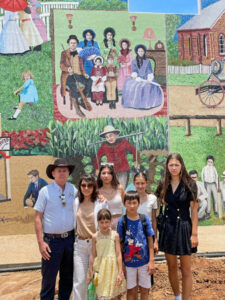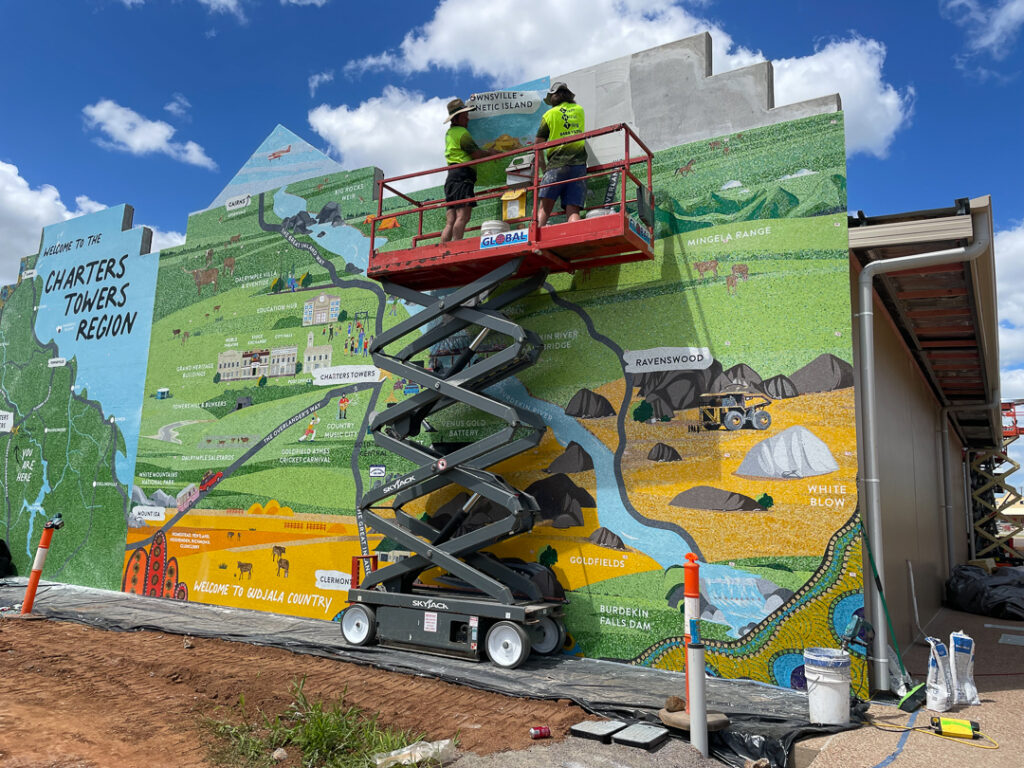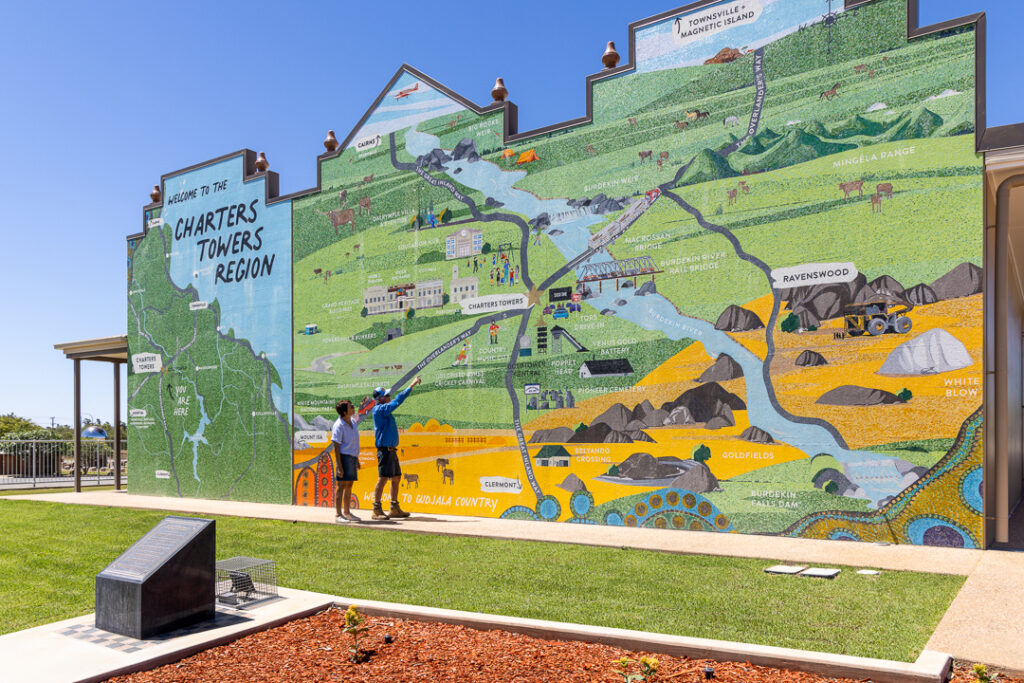
The Charters Towers’ Wall of History returns past glory to a legendary country town.
The idea of a mosaic commission came to Paul McIver while renovating a pool in a newly bought house in Brisbane. Looking for an artwork to place at the bottom, he found a mosaic factory and was impressed with the one-metre circular image they produced. Then having purchased paintings by Peter Lawson (descendent of iconic Australian writer Henry Lawson), he decided to re-create them in mosaic for his development at Charters Towers, Goldtower Central. Emboldened by this achievement, he then determined to create a mosaic telling the town’s history along the wall of Poppet Plaza, facing the Flinders Highway. For McIver, this promoted the concept of “LIve Charters Towers”: “I wanted to promote a vibrant place where there was community pride.”
The Charters Towers’ Wall of History is the longest mosaic mural in Australia. The 80-metre-long artwork consists of over five million individual tiles. It cost around half a million dollars. The ambition behind the commission reflects the glory of the town’s past.
Charters Towers was established in the 1870s after a local Aboriginal Jupiter Mosman discovered gold in a local creek. The population swelled to 30,000 and many grand buildings were constructed that are part of its heritage today. It was referred to as “The World”, meaning that you could find everything there. Charters Towers even traded with London on the stock exchange. While it is still a regional centre, including three private boarding schools, as well as three state primary schools and a state high school, the population today is only around 12,000.
With the assistance of historian Michael Brumby, the team gathered a variety of images from the archives and other scenes such as the Pioneer Cemetery. Scenes included an Aboriginal cricket team and a Chinese Gardener watering vegetables. The third panel shows underground miners next to a bank. “It shows the miners propping up the economy.” McIver was especially touched by the gravestone in the Pioneer Cemetery of a woman who died soon after the successive deaths of her children, “The purpose is to tell a history long into the future.”
These were commissioned to an artist, Trisha Lambi, who rendered them into eight images. These images were then sent to a partner factory in Asia which translated them into 10 x 10 mm ceramic tiles. McIver was impressed with their skill, “They cut round tiles for the eyes which they fitted into the grid.” Each painting took up to six to eight weeks to produce and was hand-laid in the factory.
In Charters Towers, the tiles were adhered to 300 x 300cm panels using a special mosaic grout that absorbs the surrounding colour of the adjacent tile. Local tilers then fixed the mosaic to the wall. A bronze plaque was placed in front of each scene, telling its story. Tania Ault of the local Gudjala nation designed the border trims and a wall was constructed with flags of all the nations represented in the town’s history.
 One interesting decision was to colourise the images from the archive. McIver wanted it to catch the eye, “I wanted vibrant colours. People don’t always engage with sepia colours.”
One interesting decision was to colourise the images from the archive. McIver wanted it to catch the eye, “I wanted vibrant colours. People don’t always engage with sepia colours.”
One of these images features a family in historical costume. That actually is McIver’s own family in costume taken at the Sovereign Hill open-air museum. “We couldn’t find a family image in the archive.” In this way, the present folds into the past, bringing history alive.







